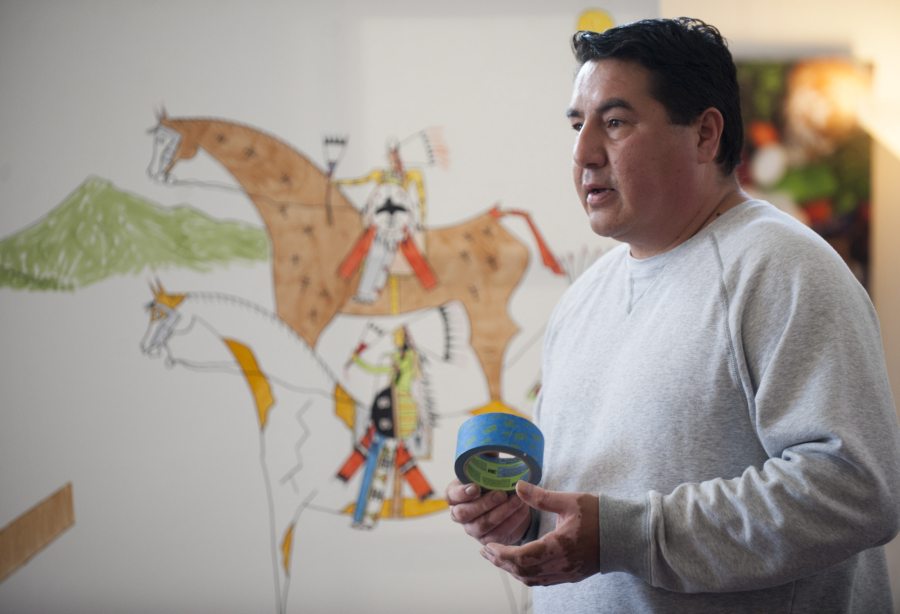George Levi is getting a chance to tell his family’s side of the massacre.
Levi will take part in a meet-and-greet event Saturday in conjunction with the Clark County Historical Museum’s exhibit of “One November Morning.”
The paintings were done by relatives of people attacked in the Sand Creek Massacre on Nov. 29, 1864; the artists include Levi, a member of the Cheyenne Tribe. His ancestors were among those killed when U.S. Army cavalrymen attacked an Indian village in Colorado.
“We’re descendants of the massacre, and our story has never been told before,” Levi said Friday afternoon. Not that their story was unique, he added. “Different names, different places: It happened all over.”
If You Go
• What: Artist meet and greet.
• Who: George Levi, contributor to “One November Morning.”
• Where: Clark County Historical Museum, 1511 Main St.
• When: 1 to 3 p.m. Saturday.
• Cost: Free to meet Levi. Regular admission fees to see rest of the museum: $4 adults; $3 seniors; $2 for under 18.
In addition to the formal exhibit, Levi has been working on additional paintings during the last few days, and they will be part of Saturday’s meet-the-artist program.
A couple of those paintings are tied to the Vancouver area. One piece Levi was working on Friday actually features the familiar Vancouver city logo that’s based on a V-shaped corner of the replica Fort Vancouver stockade.
“This fort has a lot to do with Native American history,” he said.
The work represents something of the artist’s own experience recently. Levi and Brent Learned, an Arapaho whose work is part of the exhibit, are shown in traditional tribal regalia arriving on horseback from the East. They are being welcomed at Fort Vancouver by the Nez Perce, Chinook and Cowlitz.
“It represents the meetings of cultures in this area,” Levi said, and it’s something that’s still going on. Levi said the artists had a chance to meet representatives of regional tribes during their visit.
Levi also will demonstrate a tribal art form known as ledger painting, done on pieces of paper.
“It goes back 170 years,” said Levi, a resident of Mustang, Okla. “Traders would come, and people saw them writing.”
Tribal artists realized that paper from those ledgers — and any printed material, including pages from hymn books — would work for their own drawings and paintings.





